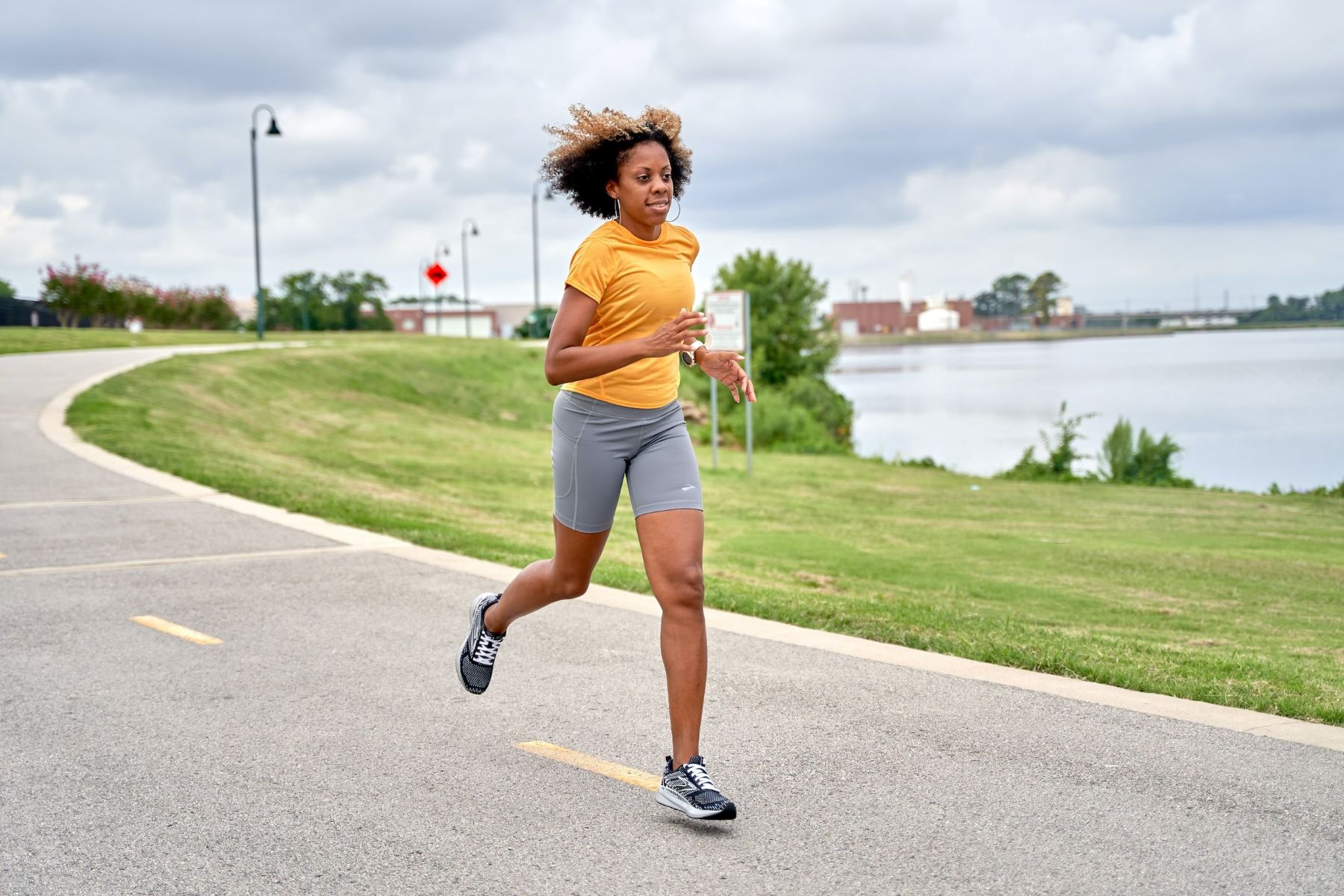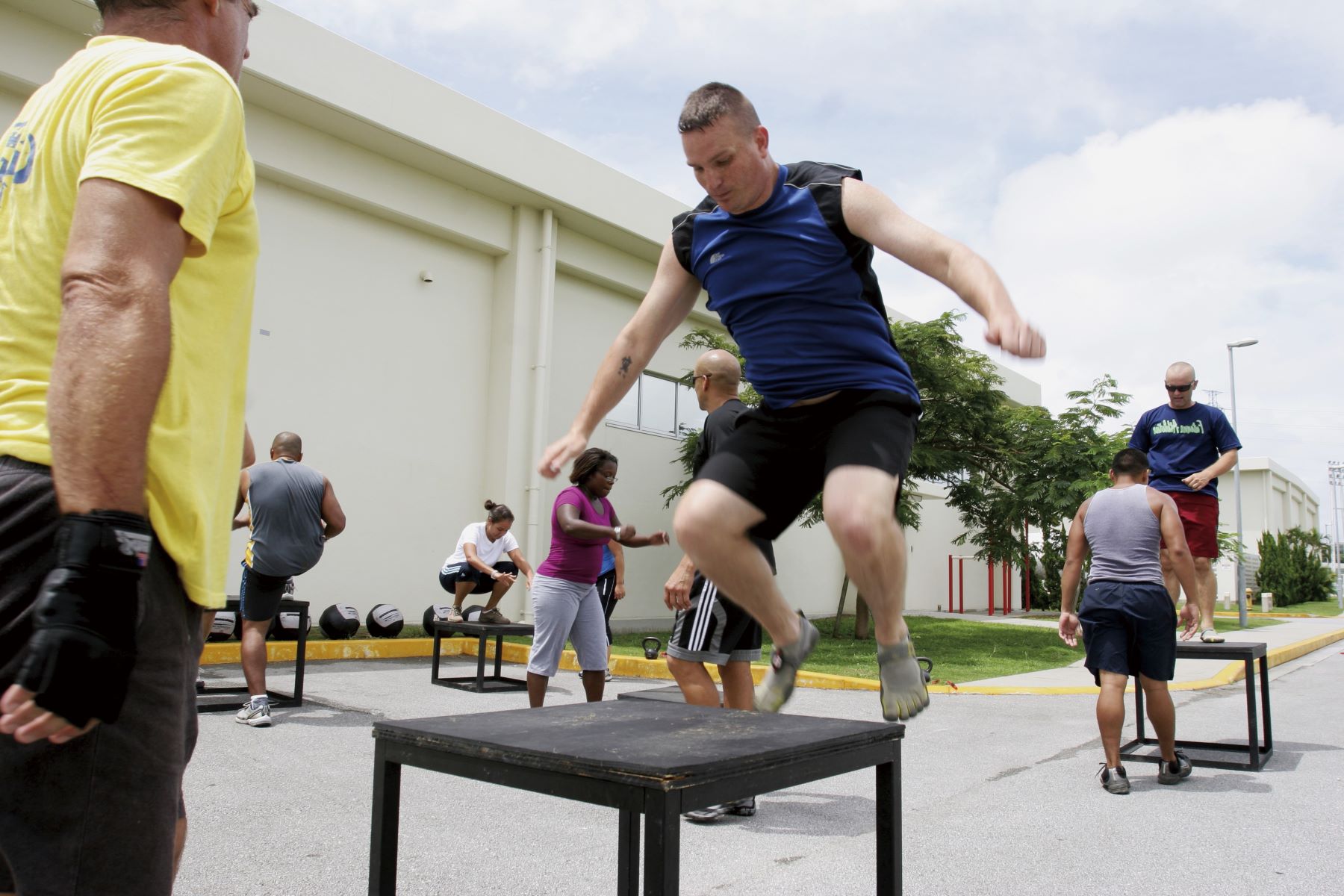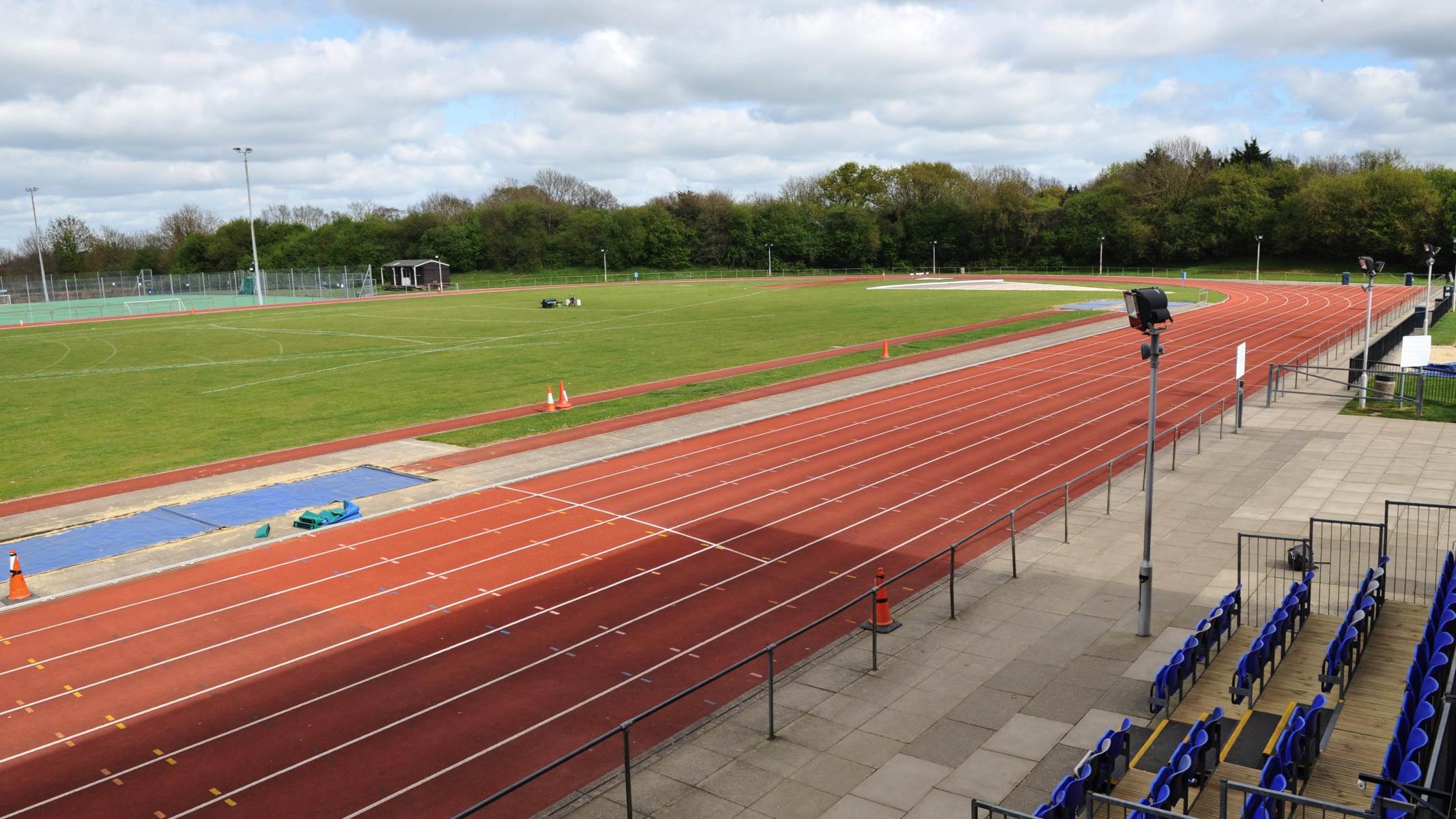Home>Health & Nutrition>Injury Prevention>Injured Runner? Here’s How To Safely Get Back On Track!


Injury Prevention
Injured Runner? Here’s How To Safely Get Back On Track!
Published: February 9, 2024
Learn how to safely recover from running injuries and prevent future ones with our expert tips and advice. Get back on track with our injury prevention strategies!
(Many of the links in this article redirect to a specific reviewed product. Your purchase of these products through affiliate links helps to generate commission for Therunningadvisor.com, at no extra cost. Learn more)
Table of Contents
Understanding the Injury
Understanding the nature and extent of your injury is crucial for a successful recovery. Whether it’s a sprained ankle, shin splints, or a more serious issue like a stress fracture, comprehending the specific injury is the first step towards getting back on track. It’s essential to consult with a healthcare professional to accurately diagnose the injury and determine the best course of action for recovery.
By gaining a clear understanding of the injury, you can effectively address the root cause and implement targeted strategies to promote healing. For instance, if you have a muscle strain, knowing the specific muscle group affected can guide you in selecting appropriate exercises and stretches to aid in the recovery process. Similarly, understanding the impact of the injury on your overall mobility and function enables you to make informed decisions about modifying your activities and seeking the necessary support.
Moreover, comprehending the factors that may have contributed to the injury, such as overtraining, improper footwear, or biomechanical issues, empowers you to make necessary adjustments to prevent re-injury in the future. This insight allows you to address any underlying issues and adopt preventive measures to safeguard against similar setbacks.
In essence, understanding the injury involves gaining insights into its nature, causes, and implications for your physical well-being. This knowledge serves as the foundation for developing a comprehensive recovery plan and taking proactive steps to minimize the risk of recurrence.
Rest and Recovery
Rest and recovery are paramount in the journey to healing from a running-related injury. While the desire to return to running may be strong, it’s essential to prioritize adequate rest to allow the body to recuperate effectively. Rest does not simply imply refraining from running; it encompasses giving the injured area the opportunity to heal without undue stress or strain.
During the initial stages of injury, rest is often prescribed to prevent exacerbation of the condition. This may involve reducing weight-bearing activities, utilizing supportive aids such as crutches or braces, and avoiding movements that aggravate the injury. By adhering to these guidelines, you provide the injured tissues with the necessary environment for repair and regeneration.
In addition to physical rest, mental and emotional recuperation are equally vital. Dealing with an injury can be mentally taxing, especially for passionate runners accustomed to the endorphin rush and sense of accomplishment that running provides. It’s important to acknowledge and address the emotional impact of being sidelined, as well as the frustration and impatience that may arise during the recovery period.
Moreover, embracing activities that promote overall well-being, such as meditation, gentle yoga, or engaging in hobbies, can contribute to a holistic recovery experience. These activities not only aid in managing stress but also provide a sense of fulfillment and purpose beyond running, fostering a positive mindset during the healing process.
As the body begins to show signs of improvement, gradual re-introduction of light movement and low-impact exercises can be incorporated to maintain mobility and prevent deconditioning. This phase of recovery is pivotal, as it marks the transition from passive rest to active rehabilitation. Engaging in activities like swimming, cycling, or gentle stretching can help maintain cardiovascular fitness and prevent muscle atrophy while minimizing stress on the injured area.
Ultimately, rest and recovery form the cornerstone of the healing process, allowing the body to mend and regain strength. Embracing this phase with patience and diligence sets the stage for a successful return to running, laying the groundwork for a sustainable and injury-free running journey.
Physical Therapy and Rehabilitation
Physical therapy and rehabilitation play pivotal roles in the recovery journey of an injured runner. These interventions are designed to address the specific needs of the injured individual, focusing on restoring mobility, strength, and function while minimizing the risk of re-injury.
Upon receiving clearance from a healthcare professional, engaging in physical therapy can significantly expedite the healing process. A qualified physical therapist will conduct a comprehensive assessment to identify the impairments and deficits resulting from the injury. This assessment serves as the basis for developing a tailored rehabilitation program that aligns with the individual’s unique needs and goals.
The rehabilitation process often begins with targeted exercises aimed at improving flexibility, range of motion, and muscular strength. For instance, if the injury involves the lower extremities, exercises focusing on calf flexibility, quadriceps strength, and hip stability may be incorporated to address imbalances and weaknesses. These exercises are carefully selected to promote tissue healing, enhance joint mobility, and rebuild muscle strength, laying the groundwork for a gradual return to running.
In addition to targeted exercises, physical therapy may encompass modalities such as ultrasound, electrical stimulation, or manual therapy techniques to alleviate pain, reduce inflammation, and facilitate tissue repair. These modalities are employed judiciously to complement the exercise regimen and optimize the body’s natural healing processes.
Furthermore, gait analysis and functional movement assessments are integral components of rehabilitation for runners. By evaluating running mechanics and identifying any biomechanical inefficiencies or compensatory patterns, physical therapists can offer corrective strategies to improve running form and prevent future injuries. This proactive approach not only aids in the current recovery but also equips the individual with valuable insights for injury prevention in the long run.
As the rehabilitation progresses, the physical therapist may introduce sport-specific drills and activities tailored to the demands of running. These may include dynamic balance exercises, plyometric training, and gradual reintroduction to running through structured walk-run programs. The gradual nature of these progressions allows the body to adapt to increasing loads and impact forces, minimizing the risk of setbacks and ensuring a safe and sustainable return to running.
In essence, physical therapy and rehabilitation serve as integral components of the recovery process, guiding injured runners towards a comprehensive and structured approach to healing. By addressing the specific needs of the individual and focusing on restoring function and performance, these interventions pave the way for a successful transition back to running, empowering individuals to pursue their passion with confidence and resilience.
Gradual Return to Running
Gradually reintroducing running after an injury is a critical phase that demands patience, attentiveness, and a strategic approach. Rushing back into full-fledged running without adequate progression can jeopardize the healing process and increase the likelihood of re-injury. Therefore, a gradual return to running is essential to rebuild strength, recondition the body, and mitigate the risk of setbacks.
The process of reintegrating running typically begins with a structured walk-run program. This approach allows the body to acclimate to the impact forces and demands of running while minimizing stress on the injured tissues. Initially, short bouts of walking interspersed with gentle running segments are employed to gauge the body’s response and tolerance. As the individual progresses through the program, the duration of running intervals is gradually increased while maintaining a mindful awareness of any discomfort or signs of overexertion.
Furthermore, paying attention to running surfaces and terrain is crucial during the gradual return phase. Opting for softer surfaces such as grass, trails, or synthetic tracks can help reduce impact and minimize stress on the joints and muscles. Additionally, varying the terrain and incline can aid in reconditioning the body and preventing overuse injuries associated with repetitive motion on uniform surfaces.
Incorporating cross-training activities alongside the gradual return to running can be beneficial in maintaining overall fitness and reducing the strain on the healing tissues. Activities such as swimming, cycling, or elliptical training provide cardiovascular benefits while minimizing the impact on the lower extremities. This cross-training approach allows individuals to sustain their fitness levels and endurance while gradually reintroducing the specific demands of running.
Moreover, adhering to a structured progression plan, guided by the principles of gradual adaptation and periodization, is essential for a safe and sustainable return to running. This entails incrementally increasing running volume, intensity, and frequency while allowing adequate recovery between sessions. Embracing a patient and methodical approach to progression is key to rebuilding running capacity and resilience without compromising the healing process.
Ultimately, the gradual return to running serves as a pivotal phase that bridges the gap between injury recovery and resuming regular running activities. By embracing a systematic and patient approach, individuals can rebuild their running foundation, regain confidence in their abilities, and set the stage for a fulfilling and injury-free return to their passion for running.
Listening to Your Body
Listening to your body is an essential aspect of the injury recovery and return to running process. It involves developing a keen awareness of the signals and feedback that your body provides, allowing you to make informed decisions and adjustments throughout the recovery journey.
One of the fundamental elements of listening to your body is acknowledging pain and discomfort. While some degree of discomfort during the rehabilitation and return to running phase is expected, it’s crucial to differentiate between normal discomfort associated with the healing process and pain that signifies potential harm. Understanding the nuances of your body’s signals enables you to modify your activities, seek appropriate interventions, and prevent exacerbation of the injury.
Furthermore, paying attention to subtle changes in movement patterns, muscle fatigue, and joint stability is integral to listening to your body. As you gradually reintroduce running and engage in physical activities, being attuned to any alterations in your gait, stride, or muscle recruitment can provide valuable insights into the body’s response to increased demands. This awareness empowers you to address imbalances, refine running mechanics, and implement corrective measures to optimize performance and reduce the risk of overuse injuries.
In addition to physical cues, emotional and mental signals also play a significant role in listening to your body. Dealing with the psychological aspects of injury recovery, such as fear of re-injury, frustration, or anxiety, requires attentive self-awareness. Recognizing and addressing these emotions fosters a positive mindset, resilience, and a balanced approach to the return to running, contributing to a holistic and sustainable recovery experience.
Moreover, understanding the impact of external factors, such as stress, sleep quality, and nutrition, on your body’s recovery and performance is a crucial aspect of listening to your body. These factors can influence energy levels, immune function, and overall well-being, directly impacting the body’s capacity to heal and adapt. By acknowledging these influences and making conscious choices to prioritize rest, nutrition, and stress management, you can optimize the body’s resilience and enhance the effectiveness of the recovery process.
Ultimately, listening to your body is a dynamic and ongoing practice that empowers you to make informed decisions, adapt to changing circumstances, and cultivate a harmonious relationship with your body. By embracing this mindful approach, you can navigate the complexities of injury recovery and return to running with attentiveness, self-compassion, and a deep understanding of your body’s needs and capabilities.

Preventing Future Injuries
Preventing future injuries is a proactive and integral aspect of a runner’s journey towards sustained health and performance. By implementing strategic measures and adopting a preventive mindset, individuals can minimize the risk of recurring injuries and safeguard their long-term well-being.
One of the fundamental pillars of injury prevention is addressing underlying biomechanical imbalances and movement inefficiencies. Conducting a comprehensive gait analysis and movement assessment can offer valuable insights into an individual’s running mechanics, highlighting potential areas of vulnerability. By identifying and addressing these imbalances through targeted strength training, mobility exercises, and form-focused drills, runners can optimize their movement patterns and reduce the strain on susceptible tissues, thereby mitigating the risk of overuse injuries.
Furthermore, embracing a well-rounded approach to conditioning and cross-training can play a pivotal role in injury prevention. Integrating strength training exercises that target the major muscle groups, particularly those essential for running, can enhance muscular resilience and stability. Additionally, incorporating activities such as yoga, Pilates, or functional training can improve flexibility, balance, and core strength, contributing to overall physical preparedness and injury resilience.
In addition to physical conditioning, paying attention to recovery and rest is crucial for injury prevention. Adequate rest periods between training sessions, prioritizing quality sleep, and incorporating active recovery strategies can optimize the body’s ability to adapt and repair, reducing the likelihood of cumulative fatigue and overuse injuries. Moreover, embracing a holistic approach to recovery, including proper nutrition, hydration, and stress management, can fortify the body’s resilience and bolster its capacity to withstand the demands of training and running.
Equally important is the role of gradual progression and periodization in injury prevention. By adhering to structured training plans that incorporate incremental increases in volume and intensity, runners can minimize the risk of abrupt spikes in training load that often lead to overuse injuries. Additionally, integrating recovery weeks and deload phases into training cycles allows the body to recuperate and adapt, reducing the accumulation of stress and minimizing the likelihood of burnout and injuries.
Lastly, staying attuned to the body’s signals and being responsive to early warning signs of potential issues are essential for injury prevention. By cultivating a mindful approach to training, runners can proactively address minor discomfort, imbalances, or movement irregularities before they escalate into full-fledged injuries. This proactive mindset empowers individuals to make informed decisions, seek timely interventions, and modify training regimens to prevent setbacks and sustain long-term running enjoyment.
In essence, preventing future injuries is a multifaceted endeavor that encompasses proactive biomechanical adjustments, comprehensive conditioning, attentive recovery practices, strategic progression, and a mindful approach to self-care. By embracing these principles, runners can fortify their resilience, optimize their performance, and embark on a sustainable running journey characterized by vitality, longevity, and injury-free pursuits.















